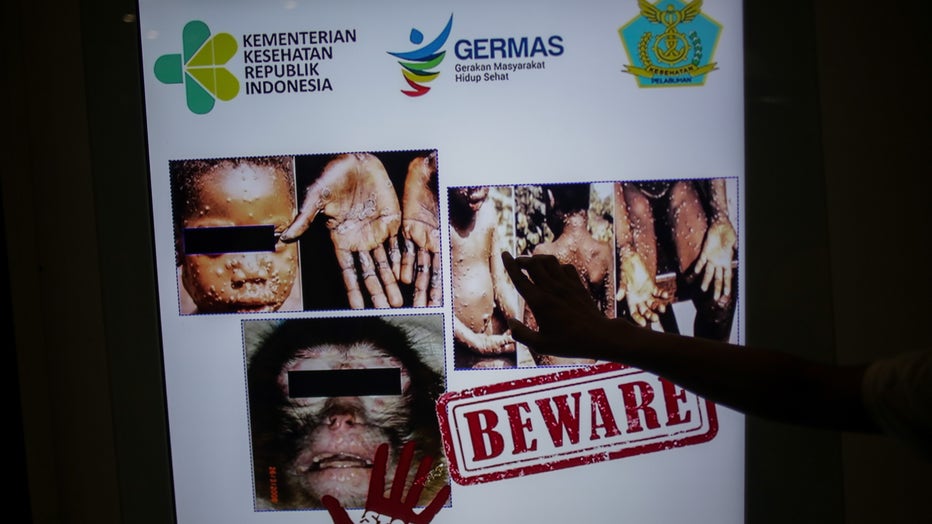What is Monkeypox? What are Monkeypox symptoms? Answers about a rare disease
Being examined by Congolese doctors, a Manfuette village teenage boy is suspected of suffering from the MonkeyPox virus in Manfuette, Republic of Congo Tuesday August 29, 2017. In a remote northern village within Central Africa, a team from the Cente
DALLAS - Officials announced Friday a Dallas resident tested positive for Monkeypox after traveling from Nigeria to Dallas. It's believed to be the first-ever case of the rare disease in Texas.
The CDC provides answers to common questions about the disease, which Americans rarely – if ever – encounter.
What is Monkeypox?
Monkeypox was first discovered in 1958 when two outbreaks of a pox-like disease occurred in colonies of monkeys kept for research, hence the name ‘monkeypox.’ The first human case of monkeypox was recorded in 1970 in the Democratic Republic of Congo during a period of intensified effort to eliminate smallpox. Since then monkeypox has been reported in humans in other central and western African countries.
What are signs or symptoms of Monkeypox?
In humans, the symptoms of monkeypox are similar to but milder than the symptoms of smallpox. Monkeypox begins with fever, headache, muscle aches, and exhaustion. The main difference between symptoms of smallpox and monkeypox is that monkeypox causes lymph nodes to swell (lymphadenopathy) while smallpox does not. The incubation period (time from infection to symptoms) for monkeypox is usually 7−14 days but can range from 5−21 days.
The illness begins with:
- Fever
- Headache
- Muscle aches
- Backache
- Swollen lymph nodes
- Chills
- Exhaustion
Within 1 to 3 days (sometimes longer) after the appearance of fever, the patient develops a rash, often beginning on the face then spreading to other parts of the body.
Lesions progress through the following stages before falling off:
- Macules
- Papules
- Vesicles
- Pustules
- Scabs
The illness typically lasts for 2−4 weeks. In Africa, monkeypox has been shown to cause death in as many as 1 in 10 persons who contract the disease.
RELATED: Dallas resident has Monkeypox; believed to be first-ever case in Texas

A passenger walk in front of a monkeypox virus information at Soekarno-Hatta International Airport in Tangerang near Jakarta, Indonesia on May 15, 2019. Monkeypox is an infectious disease by monkeypox virus endemic from parts of Central and Westerns
How is Monkeypox spread or transmitted?
Transmission of monkeypox virus occurs when a person comes into contact with the virus from an animal, human, or materials contaminated with the virus. The virus enters the body through broken skin (even if not visible), respiratory tract, or the mucous membranes (eyes, nose, or mouth). Animal-to-human transmission may occur by bite or scratch, bush meat preparation, direct contact with body fluids or lesion material, or indirect contact with lesion material, such as through contaminated bedding. Human-to-human transmission is thought to occur primarily through large respiratory droplets. Respiratory droplets generally cannot travel more than a few feet, so prolonged face-to-face contact is required. Other human-to-human methods of transmission include direct contact with body fluids or lesion material, and indirect contact with lesion material, such as through contaminated clothing or linens.
How do you treat Monkeypox?
Currently, there is no proven, safe treatment for monkeypox virus infection. For purposes of controlling a monkeypox outbreak in the United States, smallpox vaccine, antivirals, and vaccinia immune globulin (VIG) can be used.
All text/information is from the Centers for Disease Control.
RELATED: Dallas resident has Monkeypox; believed to be first-ever case in Texas

